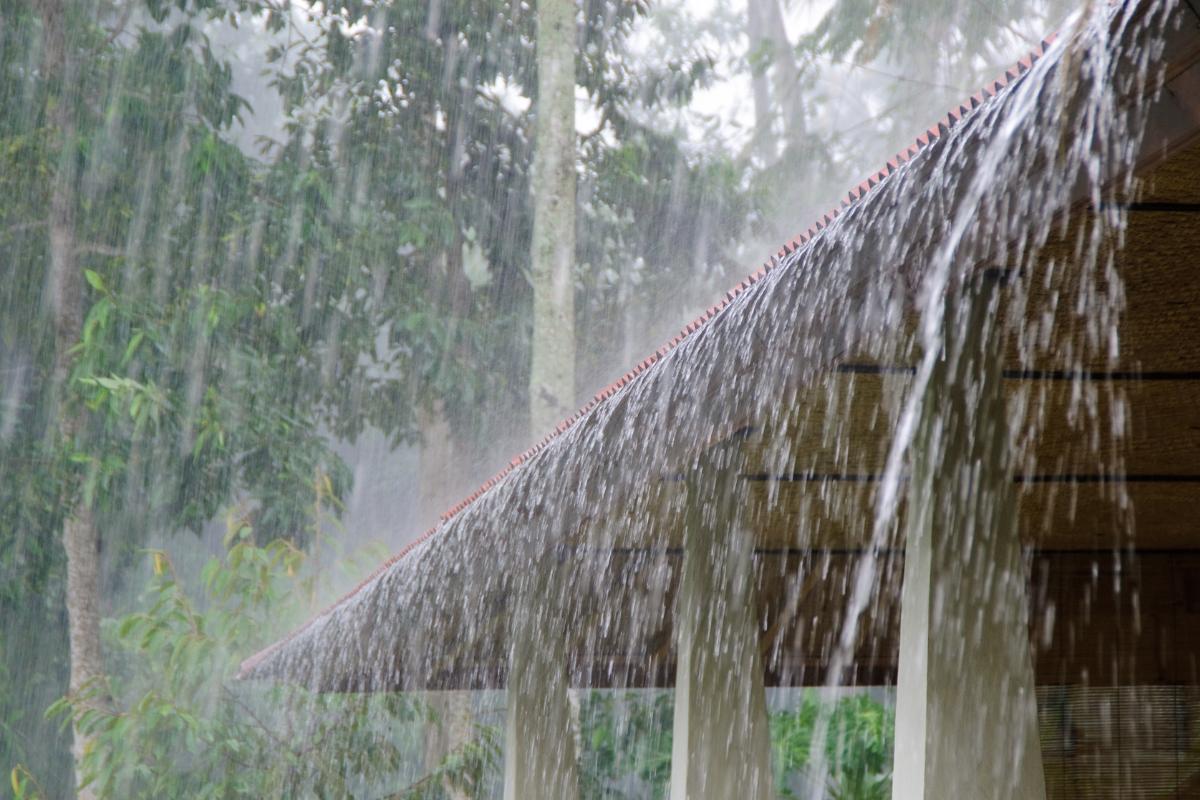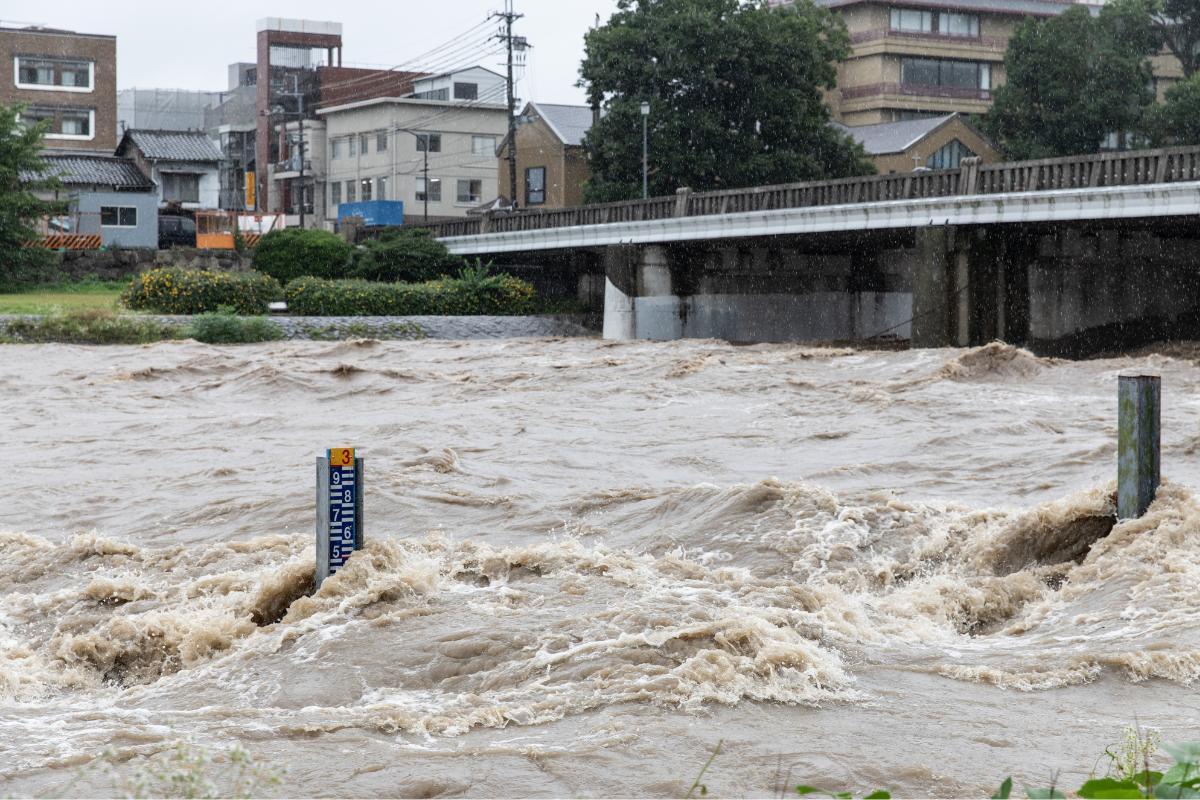What Is a Torrential Downpour? - Torrential Rain


Torrential rains are a weather phenomenon where an intense and abundant precipitation of water occurs over a certain period of time. They are often relatively short, which is why we refer to them as a torrential downpour to compare them to lighter rains. Unfortunately, torrential rains can also occur for longer periods which result in serious ecological and infrastructural devastation. It is a meteorological phenomenon caused by various issues including atmospheric instability or condensation and heat release. The effects of torrential rain can result in flooding, landslides and other phenomena that may result in the loss of human life.
At thedailyECO, we ask what is a torrential downpour? We discover the causes and effects of torrential rains, as well as what to do when we need protected from them.
What is torrential rain?
Torrential rain is a meteorological phenomenon characterized by intense and abundant precipitation of water in a short period of time. During a heavy rain, the amount of water falling from the sky is considerably greater than the average rainfall. This is why we call it a torrential downpour as opposed to normal levels of rain precipitation. The water droplets of torrential rains are usually larger and heavier, causing a greater impact on the land below.
This type of torrential rainfall can have a significant negative impact on the environment and human activities. The large amount of water can flood streets, rivers and low-lying areas. Additionally, visibility is reduced due to the intensity of the rain, making driving and other outdoor activities difficult. They are an important aspect of meteorology since predicting a long downpour can help us to reduce its negative effects, especially in vulnerable areas such as those with poorly constructed infrastructure.

Causes of torrential downpours
There are numerous meteorological scenarios that can result in torrential rain. They include the following:
- Atmospheric instability: when a warm, moist air mass rises and encounters a colder air mass at higher altitudes, atmospheric instability increases. This fuels the formation of vertically developing clouds, such as cumulonimbus clouds which are conducive to heavy rainfall.
- Condensation and heat release: this occurs as moist air rises, cools and becomes saturated. During condensation, latent heat is released. This results in the surrounding air heating up and rising even faster. This process reinforces convection and the formation of storm clouds.
- Interaction of weather systems: the convergence of air masses, such as a warm, humid current colliding with a cold air mass, can generate vertical rise and conditions conducive to torrential rain.
- Topography: torrential rains may be more frequent in mountainous areas due to the orographical formation of the mountain. Moist air rising up the slopes of a mountain cools and condenses, resulting in heavy precipitation on the rising face of the mountain. Discover another type of weather phenomenon caused by mountain inclines with our article on what is the foehn effect?
- Weather fronts: the interaction of cold and warm fronts can create conditions conducive to heavy rain. This is especially so when the warm, moist air mass is forced to rise over the cold air mass. It is very common for torrential rains to occur when fronts collide.
- Low-level wind convergence: when winds converge at the surface, the air rises and cools. This can trigger heavy rain and a torrential downpour, although it is relatively rare.
Learn about the causes an effects of another weather phenomenon with our article on what causes sandstorms?
Torrential downpour effects
A torrential downpour can last for a very short period of time. Although heavy rain, it can provide the land with a much needed boost of hydration. This means the effects of torrential rains are not always negative. However, prolonged periods of torrential rains can be devastating and result in the following:
- Floods: one of the most common consequences of torrential rains is flooding. The large amount of water that falls in a short period of time can overflow rivers and stream. This can flood low-lying areas such as various streets in urban areas. This can cause significant material damage to homes, infrastructure and vehicles. Learn more about the causes and consequences of floods in our related article.
- Landslides: heavy rain can saturate the ground, increasing the risk of landslides and mudslides in mountainous areas or on sloping terrain. These events become dangerous to people and cause damage to property.
- Disruption of public services: flooding resulting from torrential rain can disrupt essential public services, such as electricity and drinking water supplies. They can also affect the operation of transportation systems, such as roads and bridges. This triggers problems in mobility and access to affected areas, especially when an area needs to be evacuated due to flooding.
- Damage to agriculture: heavier torrential rains damage crops by flooding fields and causing soil erosion. This has a significant impact on agricultural production and food security.
- Danger to human life: flash floods and landslides can pose a real danger to human life. People can become trapped in their homes or vehicles. Rising waters can be extremely dangerous for those caught in them. Animal wildlife and livestock can equally be affected.
- Environmental impact: torrential rains can have a negative impact on the environment, causing soil erosion, contamination of water bodies due to the carryover of pollutants and the destruction of natural habitats. Learn about the different types of environmental impact with our related article.
- Economic damage: property damage and disruption to economic activities due to torrential rains can have a high economic cost for communities and local governments.

What to do during a torrential downpour
In case you face a period of prolonged torrential rain, it is essential to take safety measures to protect yourself and your property. Given the vast amount water that falls during a period of heavy rain, the situation can quickly become dangerous. We are going to list some important guidelines to follow during a deluge or downpour of this type:
- Stay aware of weather alerts and local weather conditions: listen via radio, television or mobile apps for up-to-date information on torrential rain and possible evacuations. If you find yourself in the middle of a sudden downpour, it is essential to stay calm. Confusion and panic can increase the risk of injury.
- Never try to cross flooded streets or roads: the force of the water can be deceptive and easily sweep you away. Even relatively small amounts of moving water can be dangerous. There is also the risk of standing in a place which seems level, but is actually much deeper or contains a strong undertow.
- Seek shelter: do so in a safe location, such as high ground or a flood-resistant building, where possible. Always keep an escape route in mind. Avoid seeking shelter in basements, especially if they are not well ventilated. Flash floods can make it difficult to get out and put your life at risk.
- Go high: if you are in your car during an extreme torrential downpour, leave immediately and seek higher ground. Vehicles can be swept away by currents of water even if they appear safe. If you are in danger or need help, call emergency authorities and report your location as accurately as possible.
- Secure your home: if heavy rain threatens to flood your home, turn off the electricity and gas to avoid additional risks. Only do this if you have time before evacuation.
You now know more about the causes of torrential rain, its consequences and what to do if you find yourself in the situation of facing one. Learn more about various weather phenomena with our article on what is the difference between climate and weather?

If you want to read similar articles to What Is a Torrential Downpour? - Torrential Rain, we recommend you visit our Meteorological phenomena category.
- Ramis, C., Romero, R., Homar, V., & Alonso, S. (2001). Torrential rains. Research Cienc, 296, 60-68. http://meteorologia.uib.eu/ROMU/formal/lluvias/lluvias.pdf
- Manual of use of meteorological terms (2023). Meteorology Statal Agency. Retrieved from: https://www.aemet.es/documentos/es/eltiempo/prediccion/comun/Manualdeterminosmeteorologicos.pdf







